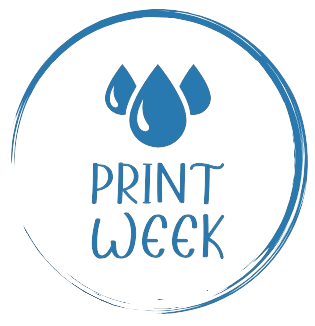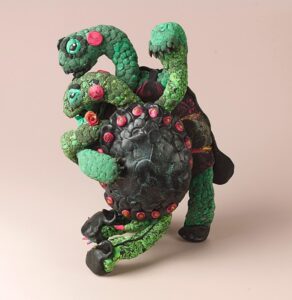Glazes are an essential component of the pottery and ceramics industry, adding a beautiful and protective finish to various products. From vibrant colors to glossy finishes, glazes can enhance the appearance and durability of pottery pieces. However, it is not uncommon for glazes to go bad over time, resulting in undesirable outcomes. In this article, we will explore the reasons behind glazes going bad and how it affects coloring pages. We will delve into the factors that contribute to glaze deterioration, the impact on coloring pages, and potential solutions to prevent or mitigate this issue.
The Science Behind Glazes
Before we delve into the reasons behind glazes going bad, let’s understand the science behind glazes and how they work. Glazes consist of a mixture of minerals, oxides, and other elements that undergo a chemical transformation during the firing process. This transformation results in the formation of a glassy surface that adheres to the pottery piece, providing protection and adding aesthetic appeal.
Glazes are typically composed of silica, feldspar, and various metal oxides. Silica acts as a glass-forming agent, feldspar serves as a flux that lowers the melting point of the glaze, and metal oxides provide color and other desired properties. The proportions and combinations of these ingredients determine the characteristics of the glaze, such as color, texture, and durability.
Factors That Contribute to Glaze Deterioration
Glaze deterioration can occur due to various factors, including improper formulation, firing conditions, and aging. Let’s explore these factors in detail:
1. Improper Formulation
The formulation of glazes plays a crucial role in their performance and longevity. If the proportions of various ingredients are not properly balanced, it can lead to glazes that are prone to deterioration. For example, an excessive amount of flux can cause the glaze to become overly fluid, resulting in poor adhesion and potential flaking.
Similarly, inadequate amounts of glass-forming agents like silica can lead to a lack of vitrification, making the glaze susceptible to damage. It is essential for glaze manufacturers to follow precise recipes and conduct rigorous testing to ensure the formulation is optimal.
2. Firing Conditions
The firing process is a critical step in pottery making, as it determines the final characteristics of the glaze. Improper firing conditions can significantly impact the quality and durability of the glaze. Factors such as temperature, heating rate, and cooling rate can all influence the outcome.
If the firing temperature is too low, the glaze may not fully mature, leading to a weak and susceptible surface. On the other hand, excessive temperatures can cause the glaze to become excessively fluid, resulting in undesirable effects like glaze crawling or running off the pottery piece.
Furthermore, rapid temperature changes during cooling can cause thermal shock, leading to cracks or crazing in the glaze. Crazing refers to the formation of fine cracks on the glaze surface, which can compromise its appearance and integrity.
3. Aging and Environmental Factors
Over time, glazes can deteriorate due to natural aging processes and exposure to environmental factors. Moisture, temperature fluctuations, UV radiation, and chemical exposure can all contribute to glaze degradation.
Moisture absorption can cause glazes to expand and contract, leading to cracks or flaking. Temperature fluctuations, especially in freeze-thaw cycles, can exacerbate this effect. UV radiation from sunlight can fade or alter the color of certain pigments in the glaze, resulting in a less vibrant appearance.
In addition, exposure to chemicals or acidic substances can react with the glaze, causing discoloration or other undesirable effects. It is crucial to consider the intended use and environment of the pottery piece when selecting or formulating glazes to minimize the impact of these factors.
The Impact on Coloring Pages
Glaze deterioration can have a significant impact on coloring pages, especially those designed for children or adults who enjoy coloring as a form of relaxation and creative expression. Here are some ways in which glaze deterioration affects coloring pages:
1. Fading Colors
Glazes that have gone bad can cause the colors on coloring pages to fade or become dull. UV radiation, moisture, and chemical exposure can all contribute to this effect. Instead of vibrant and eye-catching colors, the coloring pages may appear lackluster and unappealing.
2. Uneven or Patchy Surfaces
Deteriorated glazes may result in uneven or patchy surfaces on coloring pages. This can be due to glaze crawling, where the glaze retracts or gathers in certain areas, leaving behind bare spots. Alternatively, glaze running off the page can create streaks or smudges, compromising the overall appearance of the coloring page.
3. Reduced Durability
Aging glazes are more prone to chipping, cracking, or flaking, which can significantly reduce the durability of coloring pages. With regular use, the coloring pages may start to show signs of wear and tear, making them less enjoyable for coloring enthusiasts.
Preventive Measures and Solutions
While glaze deterioration is an inevitable process, there are preventive measures and solutions that can help extend the lifespan and quality of coloring pages. Here are some strategies to consider:
1. Quality Glaze Formulation
Using high-quality glazes that are properly formulated and tested can significantly reduce the chances of glaze deterioration. It is important to source glazes from reputable manufacturers or invest in learning the art of glaze formulation to ensure optimal performance.
2. Proper Firing Techniques
Adopting proper firing techniques, including accurate temperature control, heating rates, and cooling rates, can help achieve the desired results. It is essential to follow recommended firing schedules and make adjustments based on the specific characteristics of the glaze and pottery piece.
3. Surface Protection
Applying a protective coating over the glaze can help enhance its durability and resistance to external factors. Sealants or clear varnishes designed for pottery can be used to create an additional barrier against moisture, UV radiation, and chemical exposure.
4. Proper Storage and Display
Storing and displaying coloring pages in appropriate conditions can also contribute to their longevity. Avoid exposing them to direct sunlight or extreme temperatures. Additionally, using acid-free and archival-quality materials for mounting or framing can help minimize the effects of aging and environmental factors.
Conclusion
Glaze deterioration is a common occurrence in the pottery and ceramics industry and can significantly impact coloring pages. Understanding the reasons behind glaze deterioration, such as improper formulation, firing conditions, and aging, is essential for preventing or mitigating this issue. By adopting preventive measures and solutions like quality glaze formulation, proper firing techniques, surface protection, and proper storage and display, we can ensure that coloring pages retain their vibrant colors and durability over time.
FAQs After The Conclusion
1. Can glazes go bad even if they are properly formulated?
Yes, glazes can still go bad even if they are properly formulated. Aging and environmental factors can contribute to glaze deterioration over time.
2. How can I prevent glaze crawling on coloring pages?
To prevent glaze crawling on coloring pages, make sure the glaze is properly mixed and applied evenly. Adjusting the firing schedule and temperature can also help minimize this issue.
3. Are there specific glazes that are more resistant to fading?
Yes, certain glazes, such as those containing stable metal oxide pigments, are more resistant to fading caused by UV radiation. It is important to select glazes that are specifically formulated for durability.
4. Can I fix a deteriorated glaze on coloring pages?
In some cases, it may be possible to fix a deteriorated glaze on coloring pages by reapplying a new layer of glaze and refiring the piece. However, this process can be challenging and may require professional expertise.
5. Are there alternative finishes to glazes for coloring pages?
Yes, there are alternative finishes to glazes for coloring pages, such as acrylic sealants or varnishes. These can provide protection and enhance the colors without the need for firing.
Summary
Glazes are a crucial component of the pottery industry, but they can go bad over time due to improper formulation, firing conditions, and aging. This deterioration can have a significant impact on coloring pages, leading to fading colors, uneven surfaces, and reduced durability. However, preventive measures such as quality formulation, proper firing techniques, surface protection, and proper storage can help extend the lifespan and quality of coloring pages. By understanding the reasons behind glaze deterioration and implementing these solutions, we can ensure that coloring pages retain their vibrant colors and appeal for years to come.





